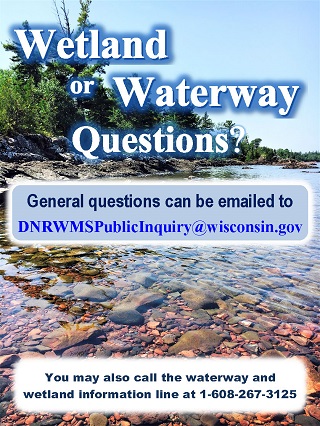Tracking, assessment and monitoring wetlands
Wisconsin has lost about half its wetlands in the last two centuries. Today, citizens want to prevent the destruction of wetlands, and restore wetlands where possible. Many also are concerned with the quality of our remaining wetlands and those we restore. Do they have diverse plant communities that provide good habitat for animals? Are they free of toxins and pollutants? Can they maintain their quality and function over time?
Planners need to look at the big picture when making decisions about wetlands. What role do wetlands play in the watersheds and landscape for fish and wildlife habitat, flood storage and water quality protection? How can municipalities plan for growth so that they retain the value of the wetlands that are left? How and where can wetlands be restored to get the "biggest bang for the buck?"
Monitoring wetlands to assess their biological health and the services they provide can help to answer some of these important questions and provide information for good decision–making.
- Wetland dashboard – This dashboard tracks activities that affect wetlands, both positively and negatively.
- Assessment methods and tools – Assessment methodologies that the DNR and others have developed to assess the health of wetlands and the services they provide.
- Reports & maps – Reports on assessment projects that DNR and partners have developed to date.

